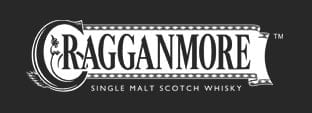Cragganmore distillery information
The Cragganmore distillery was established in 1869 by John Smith in the village of Ballindalloch in Banffshire, in the Speyside whisky region in Scotland. The location was chosen by Smith (who was an experienced whisky distiller, having worked as manager in The Macallan, The Glenlivet, Glenfarclas and Wishaw distilleries) for being close to the waters of the Craggan Burn, and the Strathspey railway. The land the distillery was built on was leased from Smiths’ landlord, Sir George Macpherson-Grant. When the distillery was built, Smith had a private railroad track built in order to connect the distillery to the nearby Ballindalloch station, making Cragganmore the first distillery to transport their whisky by train.
In 1886 Smith died, and the distillery was run by his trustees until 1893, at which time Gordon Smith, Johns’ son took over. Under his guidance, Cragganmore was rebuilt in 1902. In 1912, Gorgon passes away, and control of the distillery is taken over by his widow. Shortly after, in 1917, the distillery closes for the duration of World War 1, while government laws prevent distillers from using barley for making whisky. In 1919, production resumes, and this time the distillery is lit by electricity.
In 1923, Gordon’s widow sells the distillery to a consortium of The Ballindalloch Estate and White Horse Distillers Ltd., operating under the name Cragganmore-Glenlivet Distillery Co Ltd. They add a new warehouse in 1925, capable of storing no less than 360,000 gallons of Cragganmore whisky. White Horse Distillers pass their shares in the distillery onto Distillers Company Ltd (DCL) in 1927. In 1931, the global recession forces the distillery to close its doors again. It remains closed until 1934, when limited production resumes. It took until 1935 though to reach the production levels from before the crisis. Between 1941 and 1946, the Second World War again cripples the ability for the distillery to produce.
However, things start looking up for Cragganmore now. In 1961, the stills are converted from coal firing to oil-fired, and in 1967 the amount of stills is doubled to a total of four. In 1972, the stills were converted once more, this time to steam-heating. In the meantime, DCL merged with White Horse in 1965, and became the sole owner of the distillery.
Until 1989, Cragganmore was mostly used in blended whiskies. However, in that year the 12 Year Old was added to to the Classic Malt selection (along with Dalwhinnie, Glenkinchie, Lagavulin , Oban and Talisker). Cragganmore is one of the few remaining distilleries to use wormtubs for condensing the freshly distilled spirits.
Cragganmore whisky
Both Cragganmore’s wash stills are lantern-shaped, while the spirit stills are equipped with boiling balls to increase the amount of reflux. The spirit stills are rather small, and have narrow necks, equipped with a flat top and lyne arms that stick out from the necks just below the flat tops. It”s this design, combined with the use of worm tubs that gives the Cragganmore whisky its unique flavour.
There’s currently three different whiskies in the core range. All of them mature in Bourbon casks:
- 12 Year Old
- Distillers edition; finished in port-wine casks
- 21 Year Old
Distillery info:
| Name | Cragganmore |
| Region | Speyside |
| Logo |  |
| Status | Active |
| Founded | 1869 |
| Water source | Craggan Burn |
| Owned by | Diageo |
| Address |
Cragganmore Distillery +44 (0) 1479 874715 |
| Visitor centre | Yes |
| Website | http://www.discovering-distilleries.com/cragganmore/ |
| N/A | |
| N/A | |
| Community | Classic malts |
| Map |
Distillery Setup:
Component |
Capacity |
Quantity |
|---|---|---|
| Mash tun | ? tonnes | 1 (Stainless Steel, Full Lauter) |
| Washback | 33,000 litres | 6 (Oregon pine) |
| Wash still | 9,100 litres | 2 |
| Spirit Still | 5,700 litres | 2 |
| Expected yearly output in LPA (Litres of pure alcohol) | 2,200,000 |
